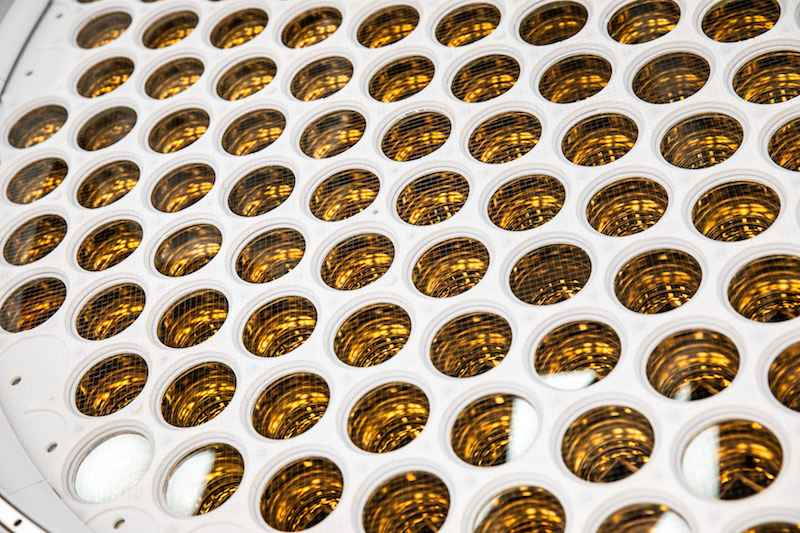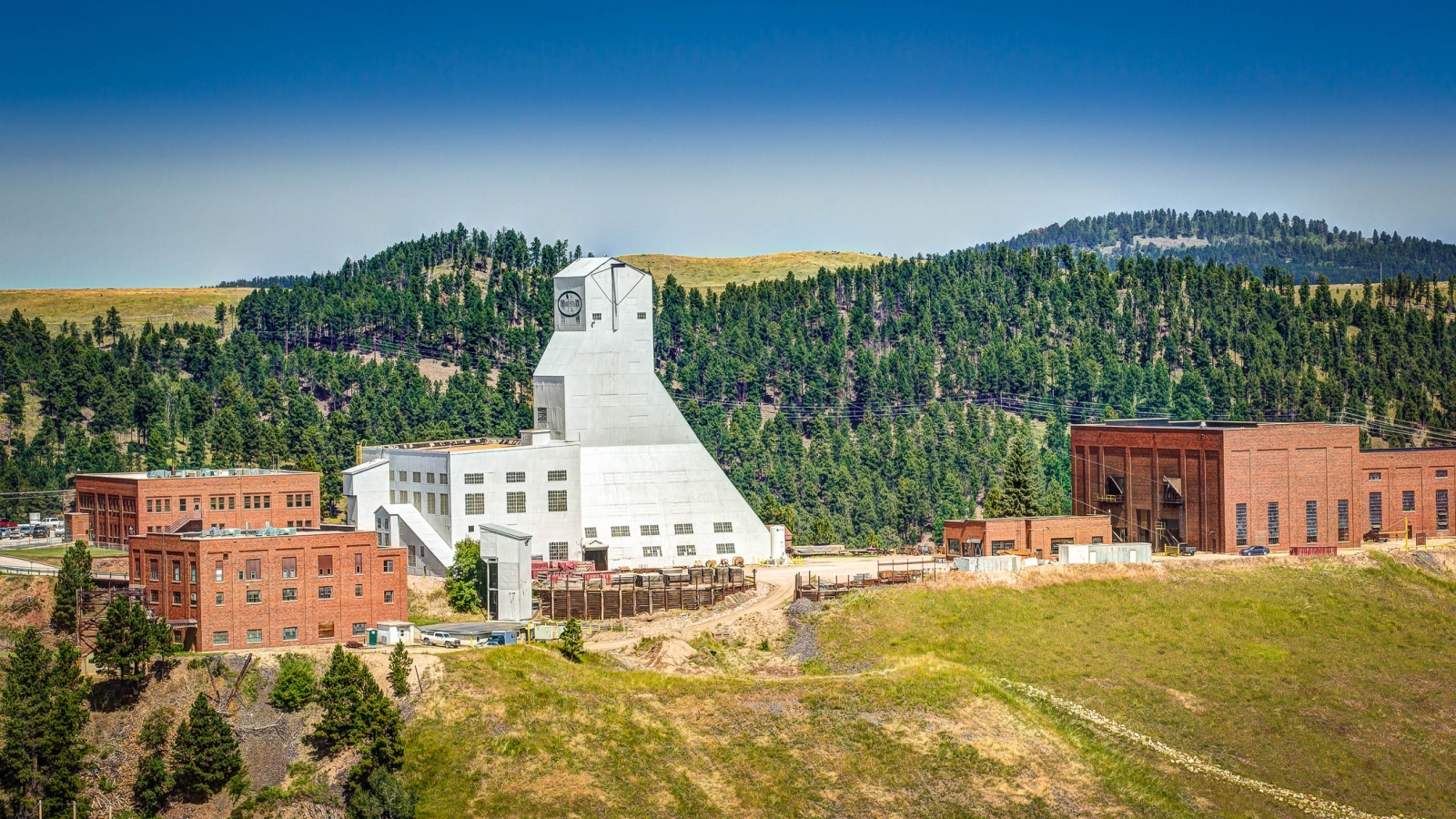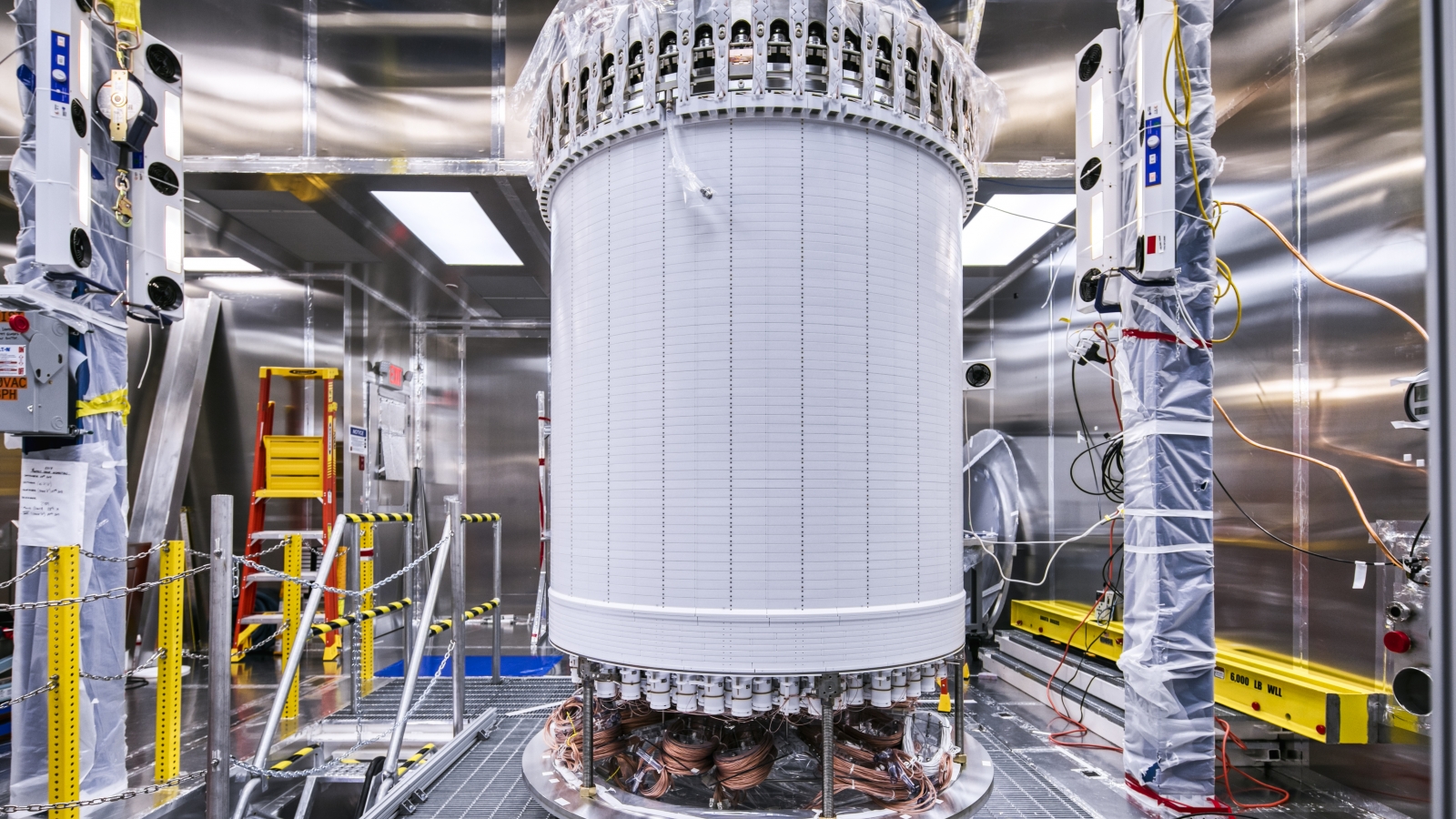
A photomultiplier tube array that is part of the LUX-ZEPLIN experiment at the Sanford Underground Research Facility in Lead, South Dakota. The photomultiplier tubes are designed to detect signals produced by dark matter particle interactions. (Credit: Matthew Kapust/SURF)
Experiment: LUX-ZEPLIN (LZ)
About: LZ is an ultrasensitive detector that is designed to find a theoretical dark matter particle known as the WIMP, or weakly interacting massive particle, by measuring signals in a tank filled with 10 metric tons of liquid xenon.
Location: Sanford Underground Research Laboratory (SURF) in Lead, South Dakota.
Role: Berkeley Lab is the lead institution for the LZ project.
Website: https://lz.lbl.gov/
Note: This is part of a recurring series highlighting ongoing Berkeley Lab work in international physics collaborations during the COVID-19 pandemic.
Crews working on the LUX-ZEPLIN (LZ) dark matter search experiment were at the peak of installation activity a mile deep at the Sanford Underground Research Facility (SURF) in South Dakota when the COVID-19 outbreak led SURF officials to limit activities to essential operations. Earlier this month the SURF site began a transition back toward increased operations.
On May 6, SURF officials moved to allow day-shift operations for science and surface projects, applying additional safety protocols to protect the health of staff, researchers, and others.
“We’ve implemented a number of controls on travel, physical distancing, health checks, and protective equipment to facilitate this transition,” said Mike Headley, SURF executive director.

Surface buildings at the Sanford Underground Research Facility in Lead, South Dakota. (Credit: Matthew Kapust/SURF)
See other articles in this series:
• Some Lab Magnet Work Proceeds on Particle Accelerator Upgrade
• In International Physics Collaborations, Working Remotely Is Nothing New
• Daya Bay Reactor Experiment Continues to Generate Data
• CUORE Underground Experiment in Italy Carries on Despite Pandemic
• DESI Team Prepares for Telescope Instrument’s Restart after Unexpected Shutdown
Limited work in surface laboratories at SURF has progressed, and this work must follow strict safety measures. Some limited work has also been allowed to continue at a few of the institutions participating in LZ in the U.S. and Europe.
Back in March, participants in the LZ collaboration placed its systems in a state that allows for remote monitoring, and limited underground access had been available for workers to check on equipment once per week.
Teleconferencing was already the norm in LZ before the appearance of COVID-19, noted Gil Gilchriese, LZ project director and a physicist at Berkeley Lab, and all LZ design and planning work has continued without interruption. Berkeley Lab is the lead laboratory for the LZ project.
The pause in installation work at SURF, he said, allowed more members of the LZ collaboration to focus on preparations for the software and computing that will rapidly process data once installation is complete and LZ begins its testing period, called commissioning.
SURF and LZ leadership are now planning to phase in higher levels of project activity at the site while complying with rules designed to ensure personal safety.

The LUX-ZEPLIN cryostat, which houses the experiment’s main detector, is pictured here in a surface lab before its delivery underground. (Credit: Matthew Kapust/SURF)
###
Founded in 1931 on the belief that the biggest scientific challenges are best addressed by teams, Lawrence Berkeley National Laboratory and its scientists have been recognized with 13 Nobel Prizes. Today, Berkeley Lab researchers develop sustainable energy and environmental solutions, create useful new materials, advance the frontiers of computing, and probe the mysteries of life, matter, and the universe. Scientists from around the world rely on the Lab’s facilities for their own discovery science. Berkeley Lab is a multiprogram national laboratory, managed by the University of California for the U.S. Department of Energy’s Office of Science.
DOE’s Office of Science is the single largest supporter of basic research in the physical sciences in the United States, and is working to address some of the most pressing challenges of our time. For more information, please visit energy.gov/science.